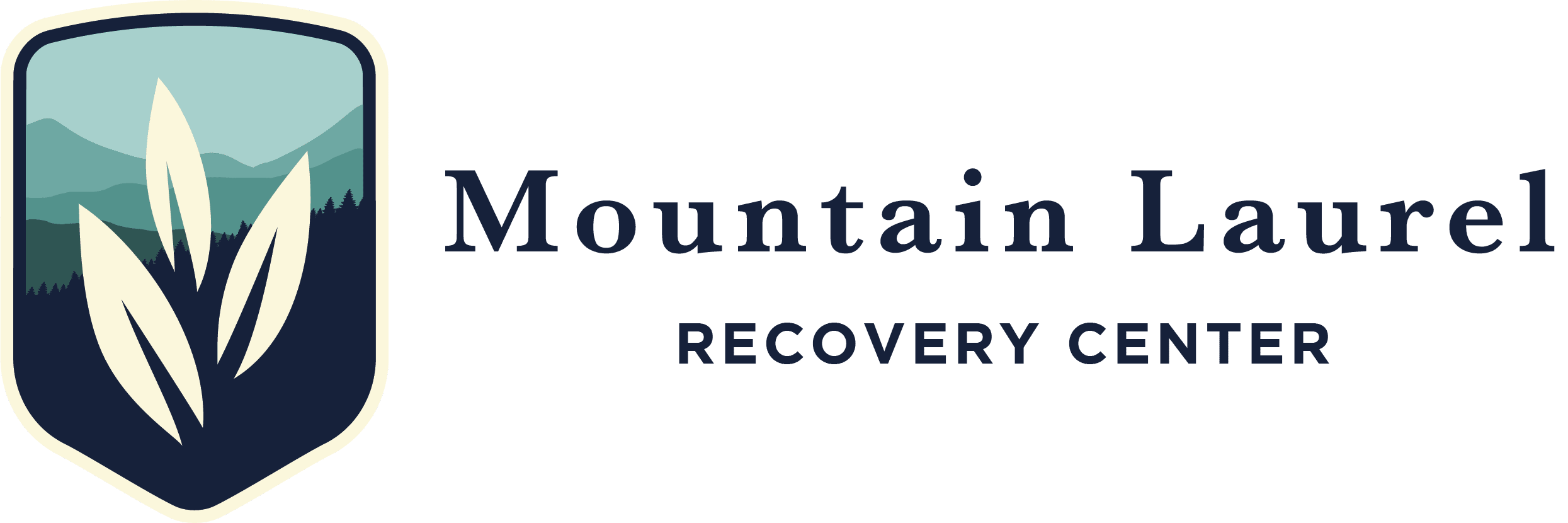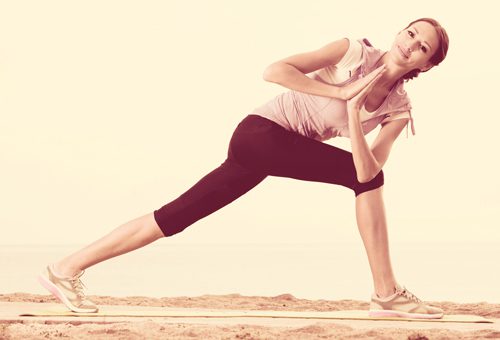 If you’re an alum of Mountain Laurel Recovery Center, you may have enjoyed the gym, basketball courts, and obstacle courses as part of a fitness routine.
If you’re an alum of Mountain Laurel Recovery Center, you may have enjoyed the gym, basketball courts, and obstacle courses as part of a fitness routine.
Recent MLRC clients have even engaged in friendly weightlifting competitions. Clients also have the option to practice yoga. As you can read in the interview with Director George Rutherford, he is a certified personal trainer and yoga instructor.
While yoga tends to get brushed aside as a complement to “real” exercise, it has much to offer, especially for those in recovery. Yoga has the weight of thousands of years behind it—years of study, meditation, and the development of a practice that trains the mind and body to achieve calm awareness.
You can read all about the history of yoga, types of yoga, and the medically-proven benefits of yoga in articles all over the Internet. Instead of repeating/rephrasing those articles for you here, I’ll share what I’ve learned from my own practice of yoga, how it has led me to greater peace, confidence, and self-awareness—something I believe it will do for you, too.
6 Benefits of Yoga
Posture – “Hold your shoulders back,” my aunt used to tell me. “Stand up straight,” someone may have told you. I did yoga for years on my own, learning from books and videos, but even after years of exercise, I still hadn’t developed the muscles needed to support correct spinal alignment. Taking a yoga class changed that. As my yoga teacher consistently corrects my posture in different poses, I’m learning to sense what good posture feels like so I can correct it on my own. Good posture affects my self-perception. I feel more confident, self-assured, and capable of responding to whatever the day may hold.
Strength – Yoga has taught me about muscles I never knew existed. If I’m holding a raised slant (a.k.a. plank) in class, the teacher’s 2 degree adjustment of my tailbone immediately activates core muscles I didn’t know I had. Even a simple cat posture becomes much more challenging when held with correct alignment. I don’t do any other form of resistance exercises, but I find I have an easier time lifting heavy grocery bags onto the counter and opening heavy doors. I no longer get lower back pain from standing or walking too long.
Flexibility – You don’t have to be flexible to do yoga. In fact, yoga is designed to help loosen even the tightest of muscles. When we move into an asana (pose) that stretches a tight muscle, we are encouraged to “breathe into that tightness” to release it. That simple practice—engaging the tightness and then slowly and calmly breathing into it—has wonderful application not just for muscular flexibility but for life. How often do we find ourselves responding to something or someone by tightening up—mentally, emotionally, physically? What do we do with that tightness? Ignore it until it gets so tight that it snaps? Or move into it calmly, exploring the tightness, breathing into it, and then letting it go?
Smooth transitioning – Yoga isn’t just about getting into a posture and holding it. It’s about how we get from posture to posture. With conscious breath and graceful movements, we move from sitting to standing, mountain to cat, cobra to child. Outside of yoga, I try to apply the principle of smooth transitions to my daily routine, allowing short periods of time for readjustment as I move from activity to activity. Taking moments to relax keeps me from feeling like I’m hurtling toward the finish line of each day, exhausting myself and compromising my peace of mind.
Body awareness – The more I practice yoga, the more quickly I become aware of how, where, and when my body feels stiff or tired. Just as eating salads every day makes you crave fresh food, so does the body learn to crave muscle and joint health. Even a simple Earth Touch (bending over to touch the floor by my feet) for a few minutes in the morning loosens my muscles and prepares me to meet the day.
Mental focus – The focus it takes to remain aware of my body’s alignment and of my breath as I move through each pose develops a greater focus outside of class. Yes, I still get “monkey mind” quite often, but when I make an effort to still my mind and focus on a task, I can do so more quickly and easily. I attribute this focus in part to my yoga practice.
How to Start Doing Yoga
There are many kinds of yoga and many yoga classes to choose from, as well as hundreds of instructional books and videos about yoga. My advice is to start your yoga practice with a certified yoga instructor. Since alignment and posture are crucial to the practice, an instructor can make sure you are doing the poses properly and thus increasing their benefits (and decreasing chances of injury). Try out a class and see how it feels. Look for the following signs of a good class:
- Careful attention to and instruction in alignment
- Incorporates breathing and meditation practices
- Instructor provides modifications for more difficult poses
- You feel comfortable with the other people in the class
- A focus on long-term health and gradual improvement rather than on competing to see who can do the craziest poses
- Not so crowded that you don’t get individual attention
If you can’t afford to take a yoga class long-term, take a few classes to learn a basic routine. Then, develop your own routine at home. Even a few simple poses each day can do wonders for your physical and mental health.
Articles about Yoga and Addiction Recovery
Yoga Journal: Yoga for Addiction Recovery
Kripalu: Break the Cycle: How Yoga and Meditation Can Help Heal Addiction.
The Addiction Recovery Guide: Yoga.
Hip Sobriety (blog): 9 Ways Yoga Helped Me Recover From Addiction.
For more information about Mountain Laurel Recovery Center, please contact us or visit our website. MLRC welcomes people of all races, ethnicities, genders, and fitness levels. You won’t be forced to eat broccoli even though it’s good for you.

 If you’re an alum of
If you’re an alum of